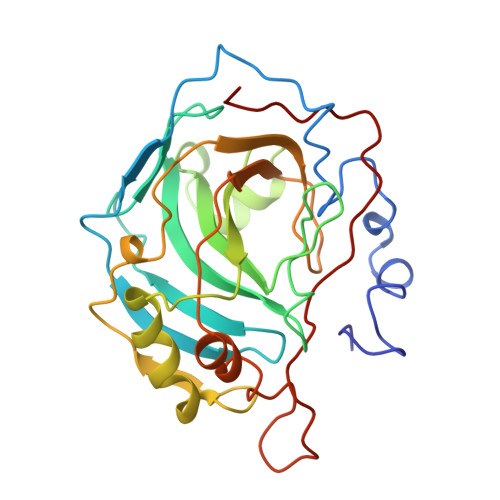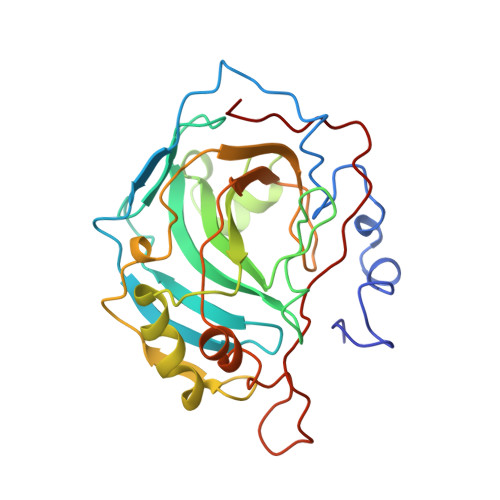Reversal of the hydrogen bond to zinc ligand histidine-119 dramatically diminishes catalysis and enhances metal equilibration kinetics in carbonic anhydrase II.
Huang, C.C., Lesburg, C.A., Kiefer, L.L., Fierke, C.A., Christianson, D.W.(1996) Biochemistry 35: 3439-3446
- PubMed: 8639494
- DOI: https://doi.org/10.1021/bi9526692
- Primary Citation of Related Structures:
1ZSA, 1ZSB, 1ZSC - PubMed Abstract:
Direct metal ligands to transition metals in metalloproteins exert a profound effect on protein-metal affinity and function. Indirect ligands, i.e., second-shell residues that hydrogen bond to direct metal ligands, typically exert more subtle effects on the chemical properties of the protein-metal complex. However, E117 of human carbonic anhydrase II (CAII), which is part of the E117-119-Zn(2+) triad, is a notable exception: E117-substituted CAIIs exhibit dramatically increased kinetics of zinc complexation, and the E117Q variant exhibits enormously diminished catalytic activity and sulfonamide affinity. The three-dimensional structures of zinc-bound and zinc-free E117Q CAII reveal no discrete structural changes in the active site that are responsible for enhanced zinc equilibration kinetics and decreased activity. Additionally, the structure of the acetazolamide complex is essentially identical to that of the wild-type enzyme despite the 10(4)-fold loss of enzyme-inhibitor affinity. We conclude, therefore, that the functional differences between E117Q and wild-type CAIIs arise from electrostatic and not structural differences in the active site. We propose that the E117Q substitution reverses the polarity of the residue 117-H119 hydrogen bond, thereby stabilizing H119 as a histidinate anion in the E117Q CAII holoenzyme. The additional negative charge in the first coordination sphere of the metal ion increases the pK(a) of the zinc-water ligand, destabilizes the transition state for CO(2) hydration, and facilitates the exchange of a zinc-histidine ligand with an additional water molecule by decreasing the stability of the tetrahedral zinc complex. These novel properties engineered into E117Q CAII facilitate the exploitation of CAII as a rapid and sensitive Zn(2+) biosensor.
Organizational Affiliation:
Department of Biochemistry, Duke University Medical Center, Durham, North Carolina 27710, USA.
















